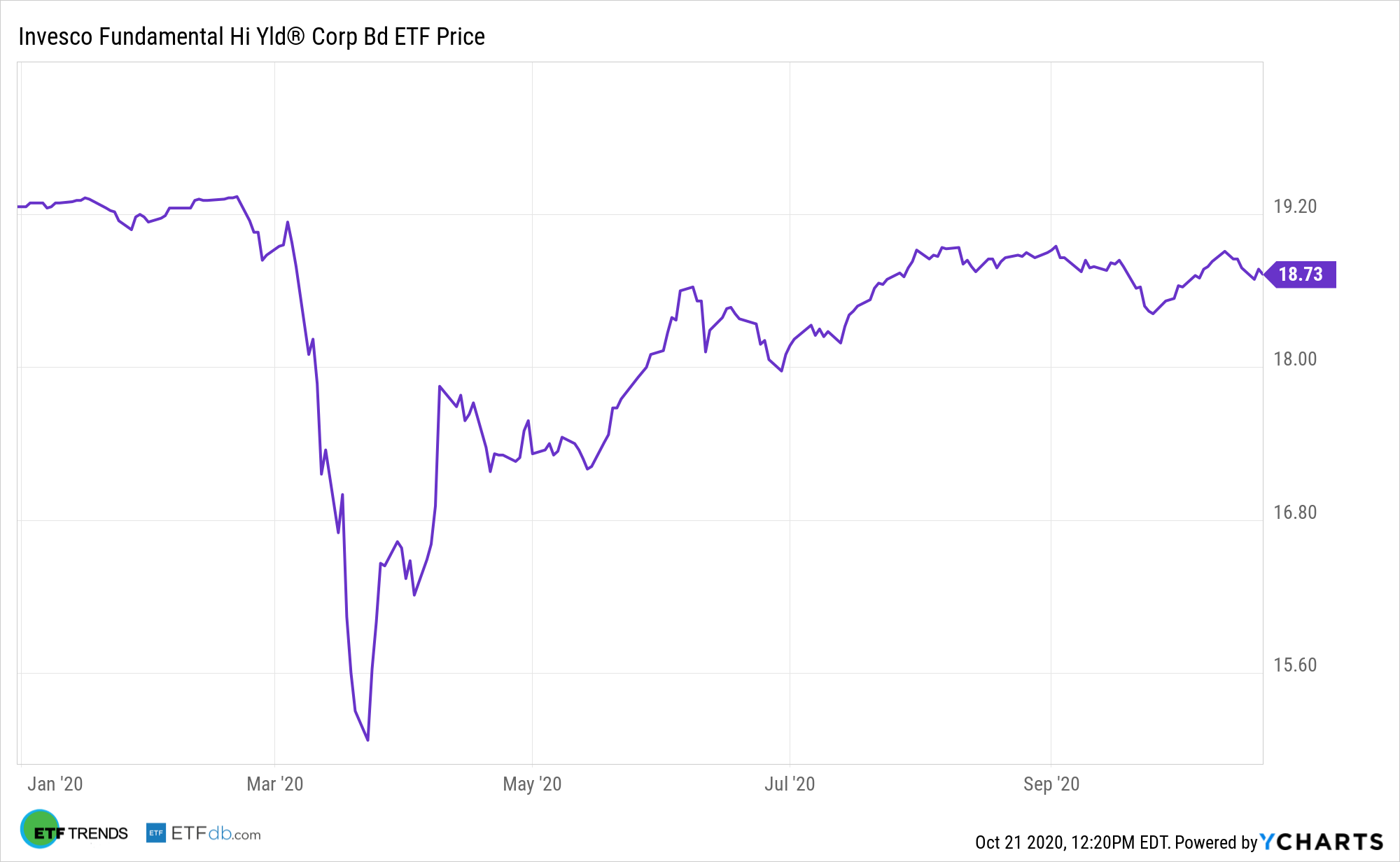Getting yield nowadays might be akin to finding a needle in the haystack, but one area investors can consider is high yield. While buyers may need to take on more risk, doing so won’t be a difficult pill to swallow if they stick to the fundamentals. Enter the Invesco Fundamental High Yield® Corporate Bond ETF (PHB).
The Invesco Fundamental High Yield® Corporate Bond ETF (Fund) is based on the RAFI® Bonds US High Yield 1-10 Index (Index). The Fund will generally invest at least 80% of its total assets in the securities that comprise the Index. The Index is comprised of US dollar-denominated high yield corporate bonds that are SEC-registered securities or Rule 144A securities with registration rights and whose issuers are public companies listed on a major US stock exchange.
Only investible non-convertible, non-exchangeable, non-zero, fixed coupon high-yield corporate bonds qualify for inclusion in the Index. Based on the Fundamental Index® methodology developed by Research Affiliates, LLC, the Index is compiled and calculated by ALM Research Solutions, LLC. The Fund and the Index are rebalanced monthly and reconstituted annually in March.
Before novice investors dive in, they should examine what they’re getting into first.

A Primer on High Yield
What exactly is high yield? Richard Barrington wrote an article in MoneyRates that provides a solid primer on the concept and whether it’s right for certain investors.
“As the name suggests, a high-yield bond is one with a higher yield than most other bonds. However, the reason some bonds yield more than others has to do with their quality,” wrote Barrington. “Bond issuers are evaluated for their creditworthiness much the way individual consumers are given a credit score. There are three major bond rating agencies, and they give bonds a range of scores from high to low.”
Speaking to corporate bonds in particular, Barrington mentioned that “two keys to the quality of corporate bonds are their cash flow and financial obligations.”
“As far as cash flow is concerned, investors look to see if a company’s operations are regularly generating enough cash over and above expenses to meet the interest and principal payments due on its bonds,” Barrington writes. “Having cash reserves is also a plus, but since those reserves may be used for other purposes, having strong cash flow is crucial for a company to be able to meet its debt obligations sustainably.”
“The amount and priority of those financial obligations is also a factor in the quality of corporate bonds,” he added. “The more debt a company takes on, either by borrowing or issuing bonds, the more stretched it will be to meet all its payments. In particular, bond buyers should be aware of whether or not particular bonds are issued as subordinate to other bonds. Subordinate bonds have a lower claim on a company’s assets than other bonds should the company fall into bankruptcy. This lower claim means subordinate debt is typically given a lower quality rating.”
For more market trends, visit ETF Trends.








